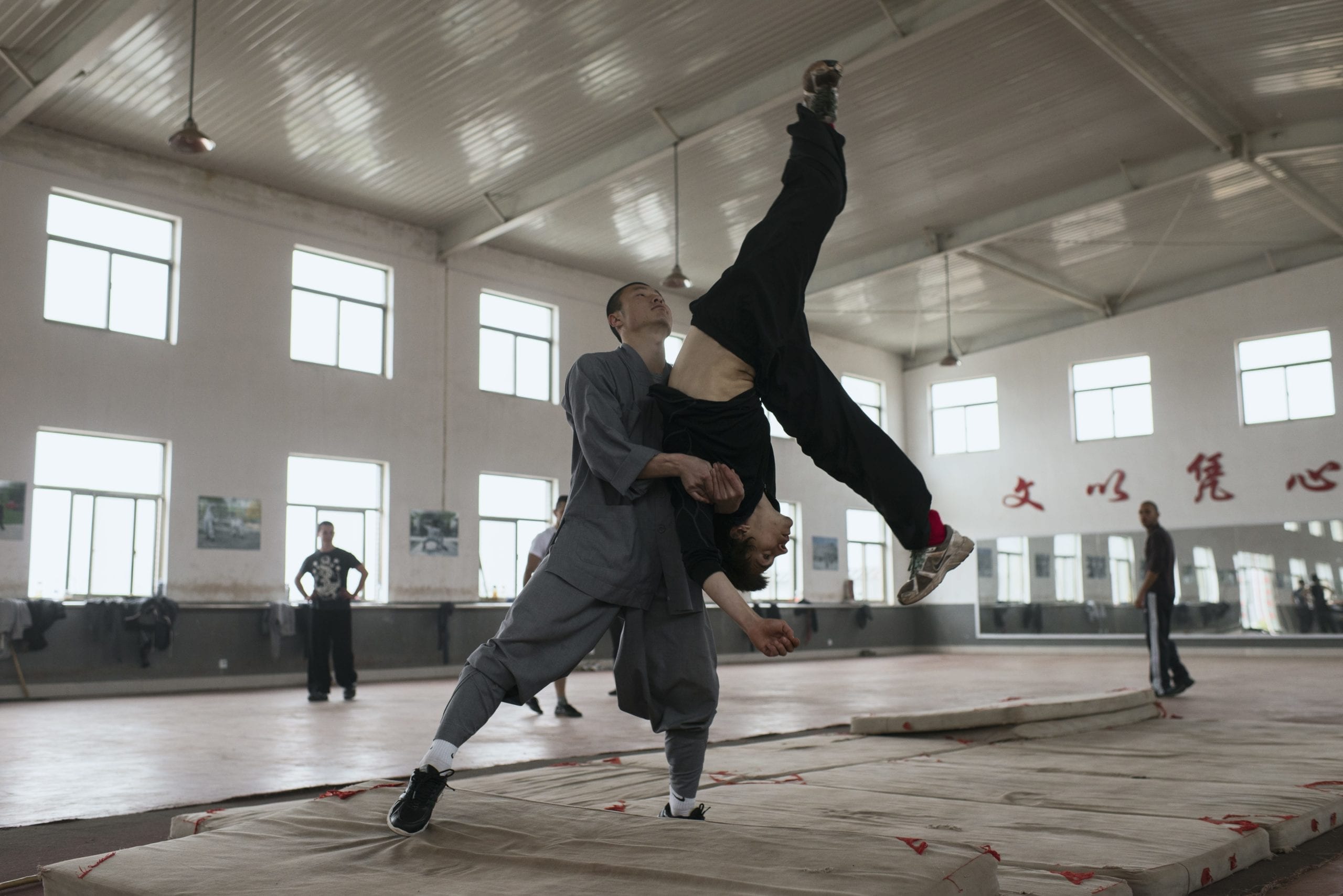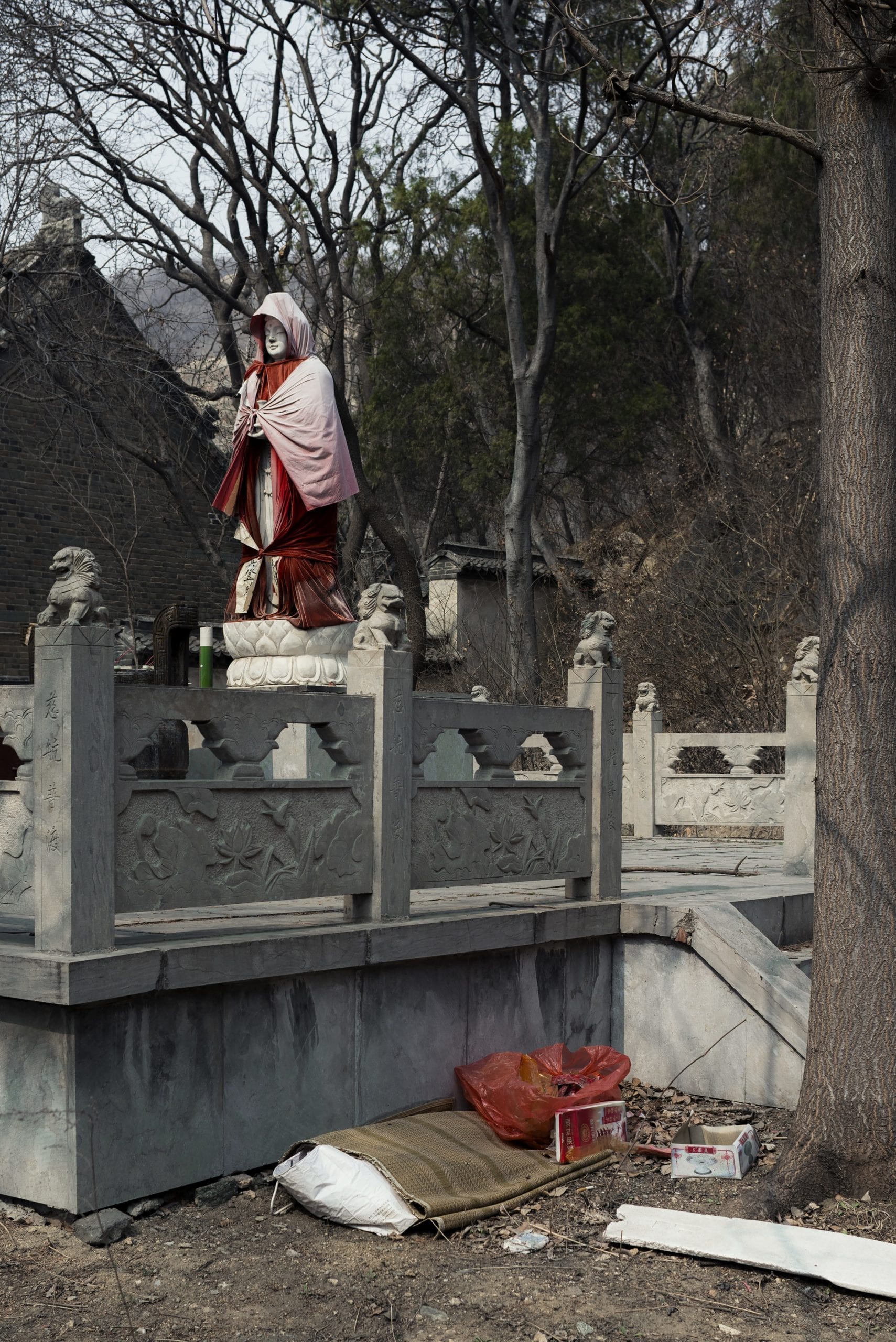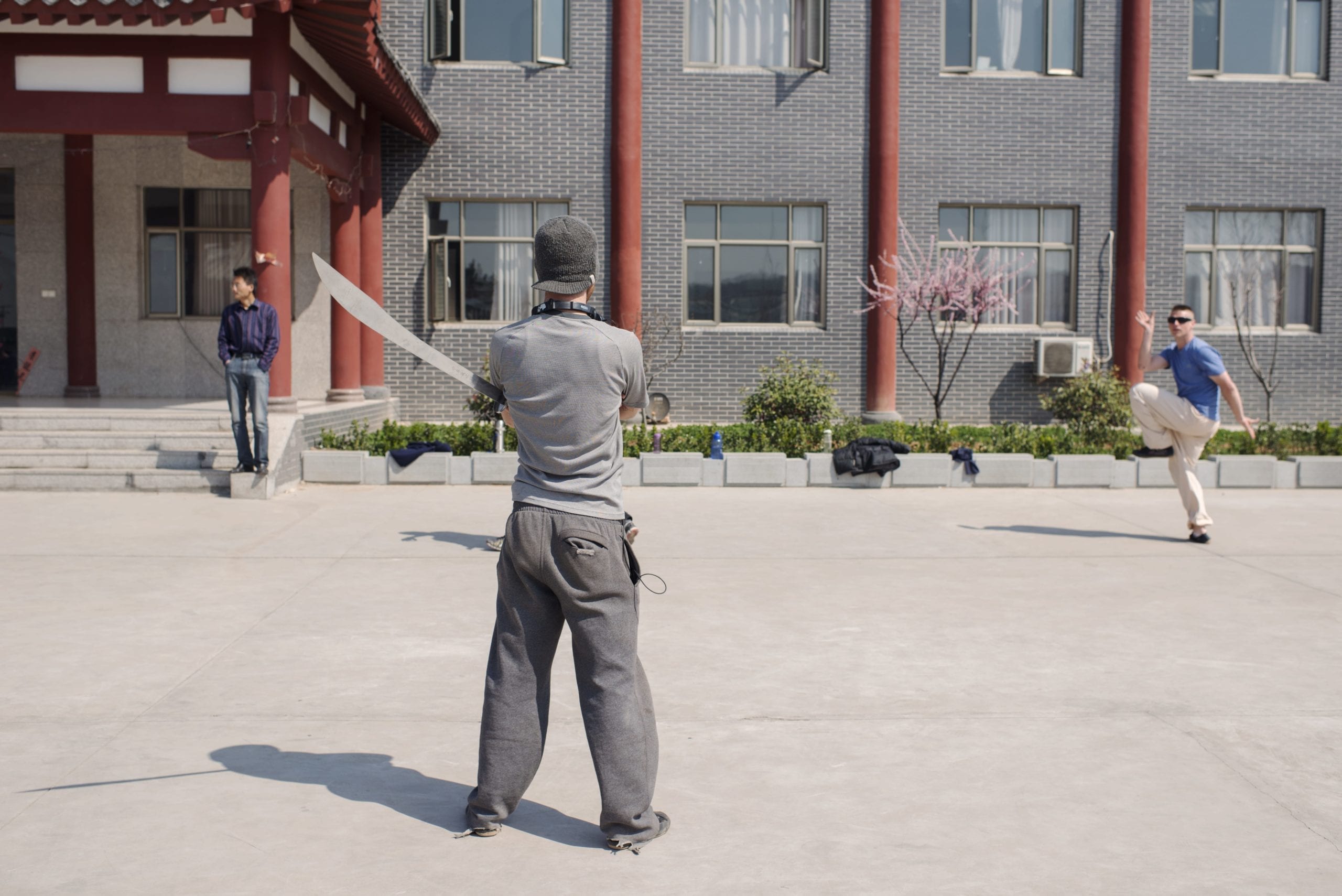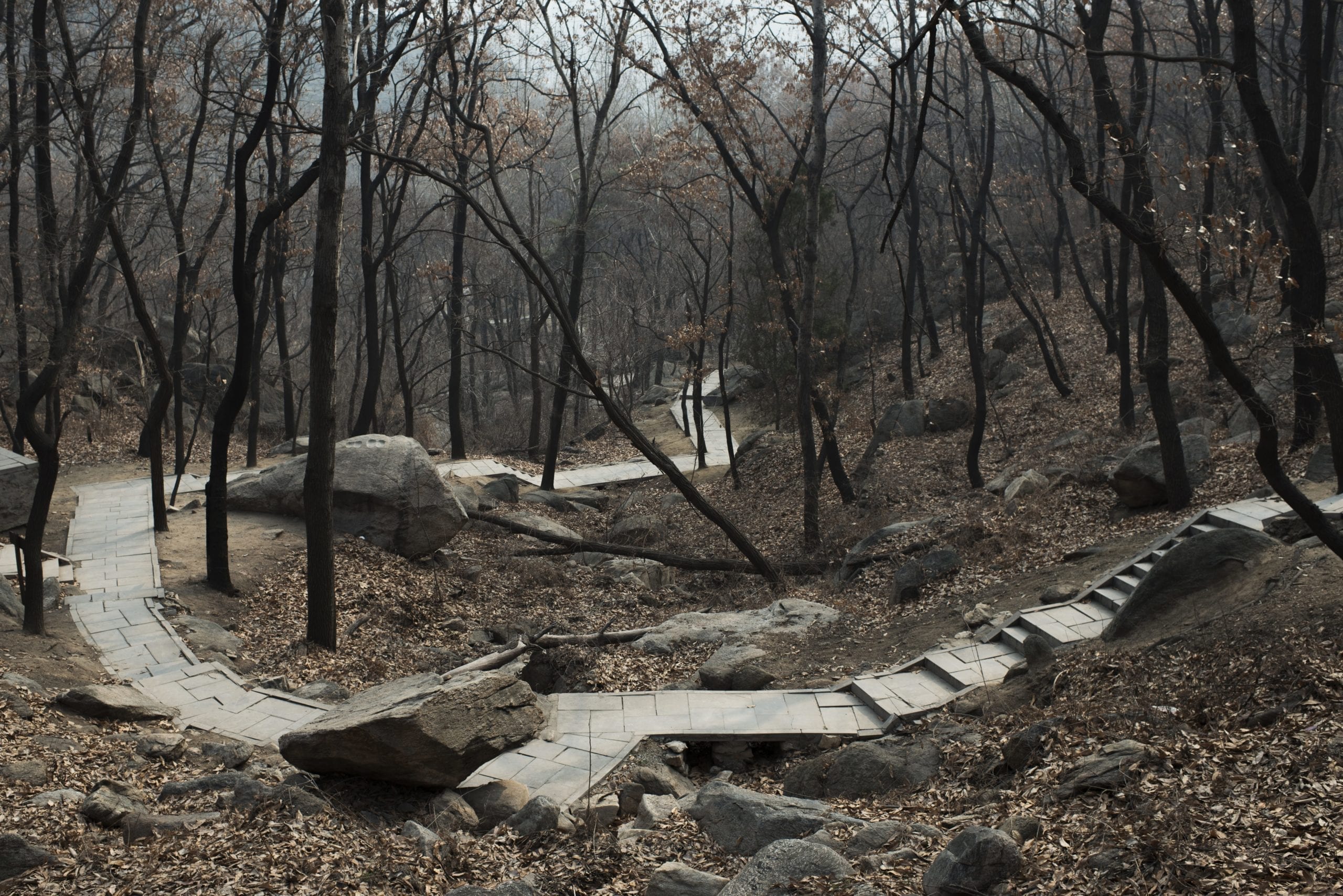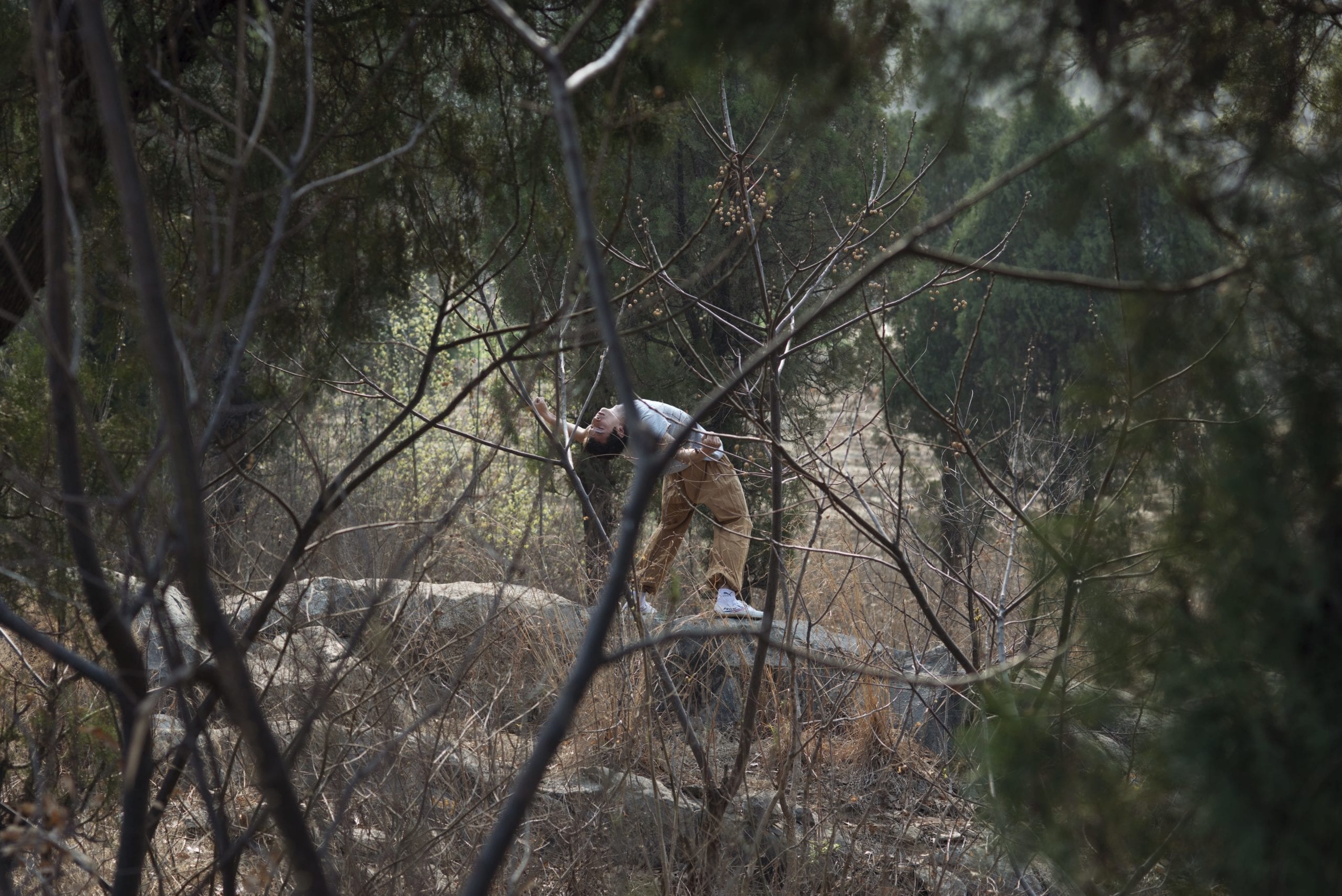Ameena Rojee’s collection, Hard Work, documents life at the School of Shaolin Kung Fu in Qufu, China.
Rojee travelled to the school following a “split-second decision”, she says, inspired by the martial arts films she had watched growing up, and as part of a broader interest in exploring human limits and our power to break them.
The images candidly depict a world poised between the romance of the old and the expediency of the new, where traditional monk’s robes float above Nike trainers, and religious icons vie with plastic bags for the viewer’s attention.
It is a leitmotif Rojee shares with photographer Jon Tonks, who she cites as a key influence. She says the juxtaposition of ancient practices in the modern world is something that has always intrigued her, being rooted in her mixed Mauritian and Spanish heritage and UK upbringing. “I essentially grew up in a mix of old and new”, she explains.
Nowhere is this more striking than in an image of the school’s recycling, dumped before of a mural of a landscape painted in the traditional calligraphic style of guohua. This contrast is wittily accentuated by the bags of recycling, which undulate colourfully beneath the muted hues of the mural’s rolling hills.
This mirroring of forms is a recurring motif in Hard Work. One image captures a student thrusting a staff forward. Depicted above him, two distant cranes thrust their own staffs forward in apparent mimicry.
The effect is subtle and mildly comic, drawing one’s thoughts to the serious, new China being built around the school. Another shows a student practicing qigong—a series of mental and physical postures combined with breathing techniques—bent over backwards to such a degree that one could almost confuse him with the bending web of branches through which he is glimpsed.
Many of the photographs capture the austerity of the area around the school, an austerity as true to the asceticism of the school’s Buddhism as to the dreariness of industrial China.
Rojee’s series is unpretentious in its documentary style, favouring the subtlety of Qufu’s greys and browns over flashy colours, and often employing simple composition—typically horizontals that bisect the images and evoke the region’s traditional flat architecture. “I like balance and symmetry”, Rojee says. “I like my lines to be straight and horizons to be parallel to the edge of the photograph”.
The frequent bleakness of the subject matter is not lost on her. “The pollution was awful, greying the landscape almost daily, and I had a bad cough and no voice by the end of my month there,” she says. “I’m not ashamed to share that I had quite romantic notions about the area when I was planning to go; being out in what was quite a rural area, I was expecting lush greens and beautiful sunsets, rich colours and airs clearer than London. I found very much the opposite to what I’d expected, ideals built from a lifetime of watching visually gorgeous martial arts films.”
No picture captures this bleak landscape better than one depicting two unassuming figures enjoying—perhaps ‘enduring’ is the better term—a morning run across a superlatively uninviting heath. Even the aesthetic promise of the distant mountaintops is broken by thick smog. “Despite this, in the end I still found it beautiful”, she remarks, “I just embraced and focused on it as a part of the life and culture I was exploring and documenting.”
But there are many exceptions to the shots of litter-strewn drabness. An aerial photograph depicting school children sat in rows is perhaps the most striking. The children’s blue-grey uniforms pop against the red dirt beneath them, and the image employs an energetic composition built from triangles marked by bold diagonals as one might find in a Baroque painting.
There is also a picture of monks resting on the steps of the school after a long day, shoes off, sun setting; of a student executing an impressive cartwheel with the assistance of an instructor; of a remarkable winding path through the woods; of a student sunbathing, though lying so flat that one half-imagines he has been shot by whatever produced the plume of smoke behind him.
Ultimately, however, it is the bleakness Rojee embraces that stands out. Happily, as with Van Gogh’s Shoes, the unattractiveness of what is depicted does not redound to the depiction, an achievement of which Rojee is keenly aware: “I’m looking at an aesthetic imperfection—what is often perceived as a weakness”, she says, “and I’m trying to change that perception, and trying to show the strength in it.”
See more of Ameena’s work here.

